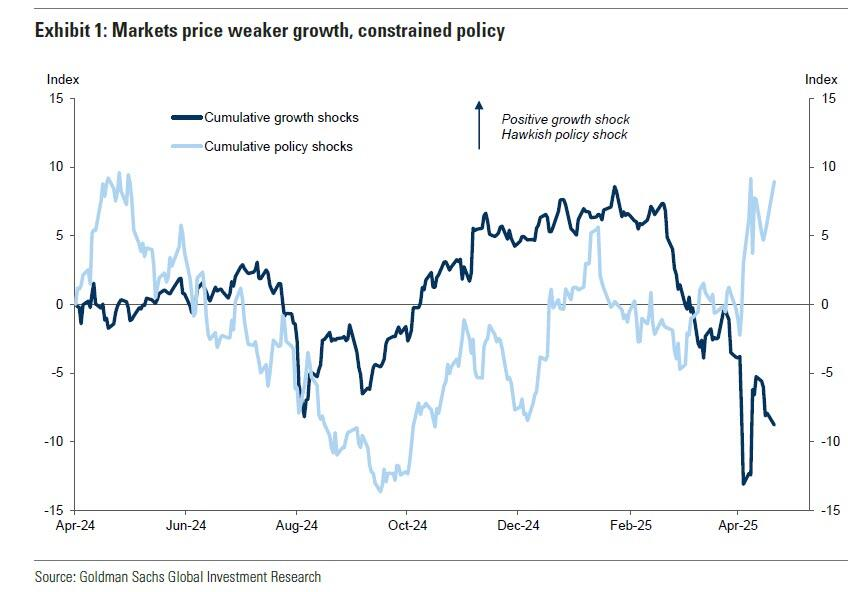Author: Gao Zhimou
As the market speculates about the Federal Reserve's interest rate cut path, analyses from top investment banks and Fed officials point to an increasingly clear conclusion: to truly trigger the hesitant Federal Reserve to cut rates, the key may not lie in subtle inflation data fluctuations or short-term tariff policy noise, but in a more direct and potentially more brutal signal - a significant deterioration in the labor market.
For Trump (or anyone holding this position) who yearns for lower interest rates, a weak employment market might be the most effective catalyst to achieve their goal.
Goldman Sachs Perspective: "Significant Upward Pressure" on Unemployment Rate as Action Signal
Goldman Sachs strategist Dominic Wilson clearly stated in his report that the "sharp deterioration" of the labor market is key to the Fed's policy shift. He emphasized: "Any significant upward pressure on the unemployment rate will see the Fed firmly move to action (rate cuts)."
Wilson analyzed that although the temporary halt of mutual tariffs on April 9th briefly prevented the economy from sliding into recession, the fundamental risks remain unresolved. Policy-induced high uncertainty, low consumer and business confidence, and compressed real income growth mean the US economy "still has a high likelihood of falling into recession".
Goldman Sachs predicts that if a comprehensive recession occurs, the S&P 500 index might drop to around 4,600 points, high-yield bond credit spreads could exceed 600 basis points, and short-term Treasury bond yields might fall below 3%.

Meanwhile, the financial fragility exposed by recent market volatility (including the Treasury market) remains a concern. The ultimate impact of tariffs on inflation and employment will take time to manifest, which may keep the Federal Reserve in a "recession observation" mode for the next two to three months. The unclear paths of trade and fiscal policies, coupled with the need to anchor inflation expectations, make it difficult for the Fed to act decisively.
Based on this, Goldman Sachs believes that even with short-term tariff-induced inflation disruptions, "any significant upward pressure on the unemployment rate will prompt the Fed to take firm action".
They judge that a recession could "easily" trigger the Fed to cut rates by about 200 basis points in the short term, a magnitude "significantly beyond current market pricing". In other words, the upward pressure on the unemployment rate caused by a surge in unemployed persons might be the key factor forcing Fed Chair Powell to take action.
Fed Officials Confirm: Focusing on Unemployment Rate "Rise Speed"
Recent remarks by Federal Reserve Vice Chair Christopher Waller provide internal confirmation from the decision-making level for the above viewpoint. He also views the labor market as a critical variable.
Waller acknowledged that the comprehensive impact of tariffs might not become clear until the second half of 2025, and tends to view its impact as a "one-time price level effect" (temporary inflation).
He added that "facing price increases caused by tariffs and viewing them as temporary requires courage" - suggesting the complexity of making such judgments in the current environment, especially considering potential political factors.
So, what could prompt the Federal Reserve to act quickly? Waller's answer is consistent with Goldman Sachs: employment data. He stated that he would not be surprised by tariffs potentially causing more layoffs and higher unemployment. More importantly, Waller emphasized that the Fed's focus will be on the "rise speed" of the unemployment rate, not its absolute level. He believes:
"Tariffs could quickly push up the unemployment rate."
This logic is also supported by Minneapolis Fed economist Javier Bianchi, who believes tariffs are essentially a "negative demand shock" with a deflationary effect. This further supports the view that the Fed should "see through" short-term inflation and implement expansionary monetary policy (rate cuts) to avoid worse economic consequences.
Waller finally warned that the current data dependence might risk the Fed facing another "action lag" (similar to 2021 but in the opposite direction). Once the rising unemployment rate drives economic downturn, "significant rate cuts may follow".






